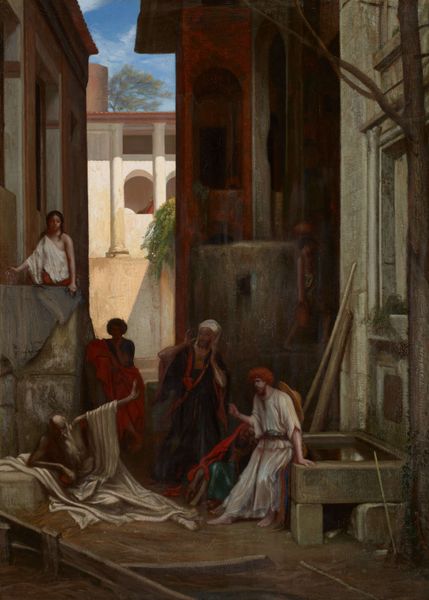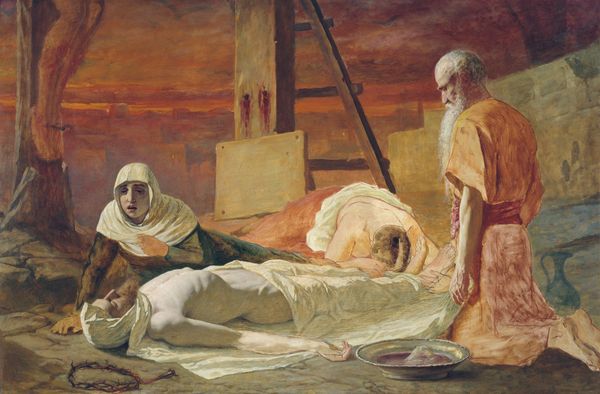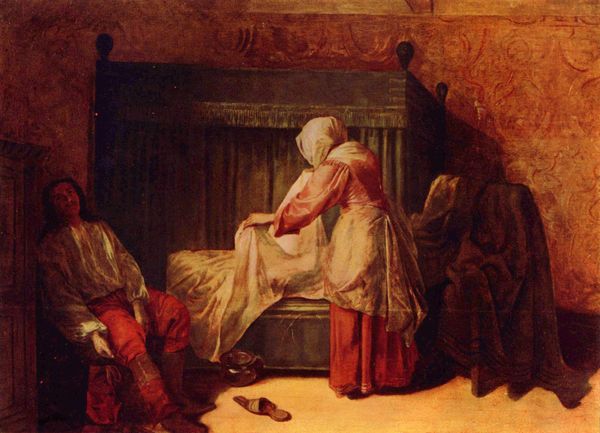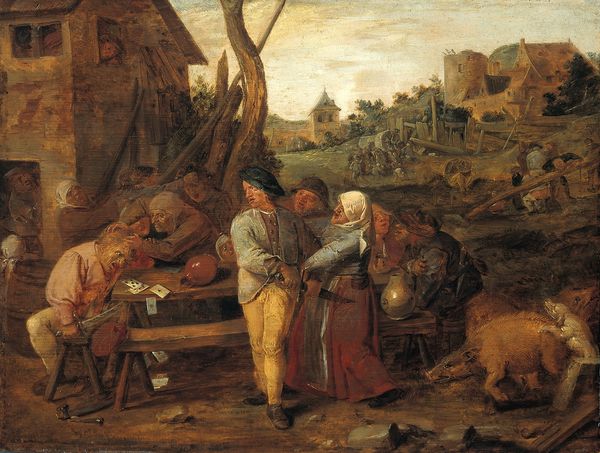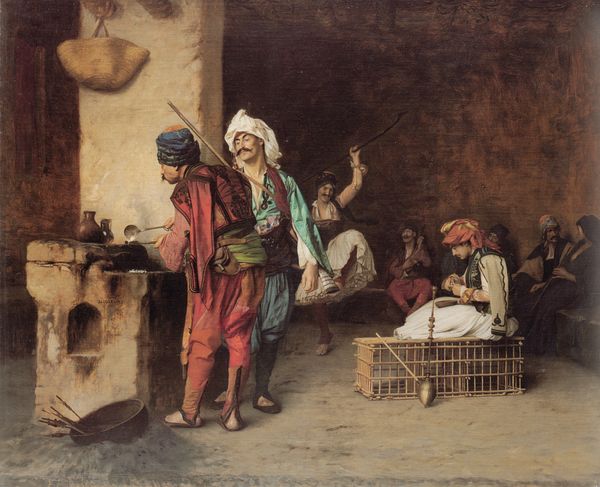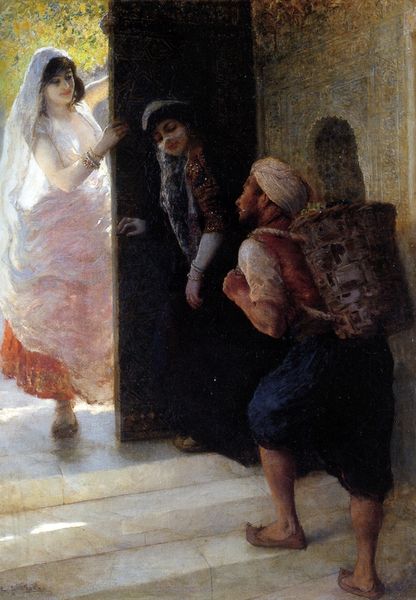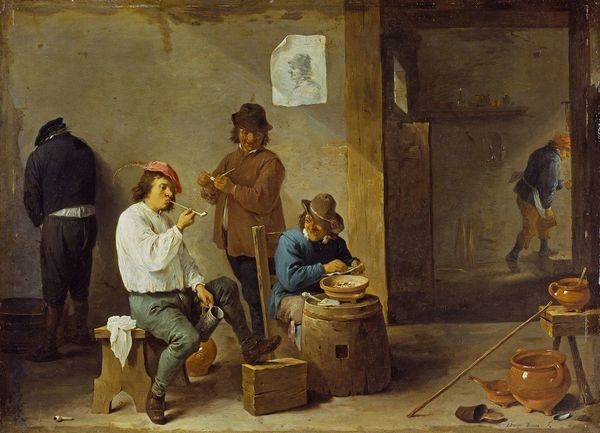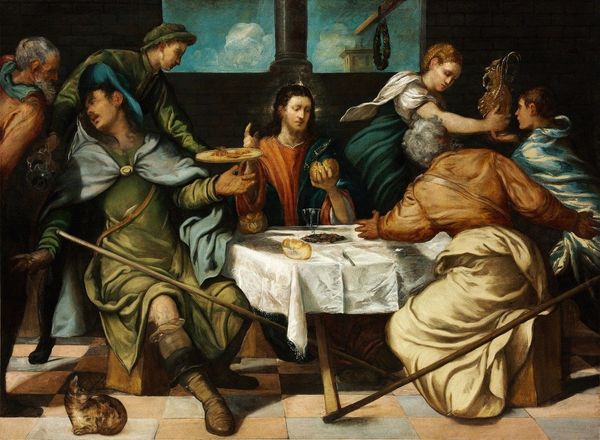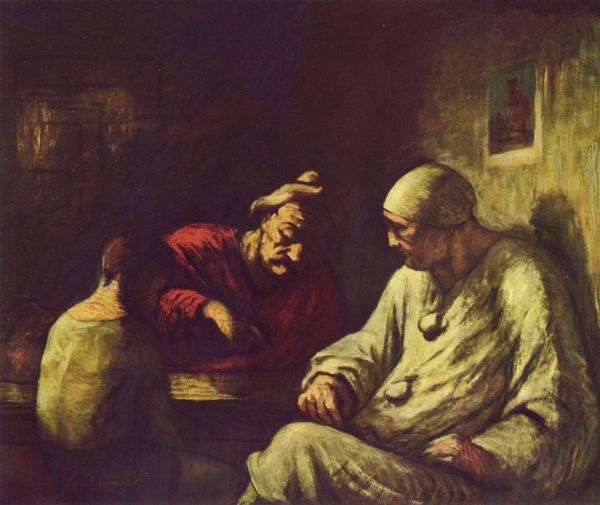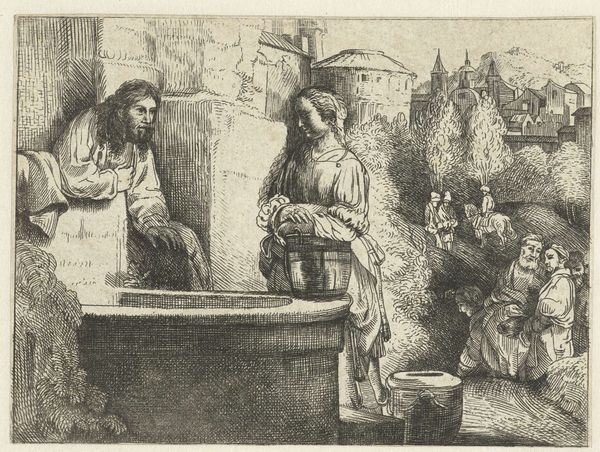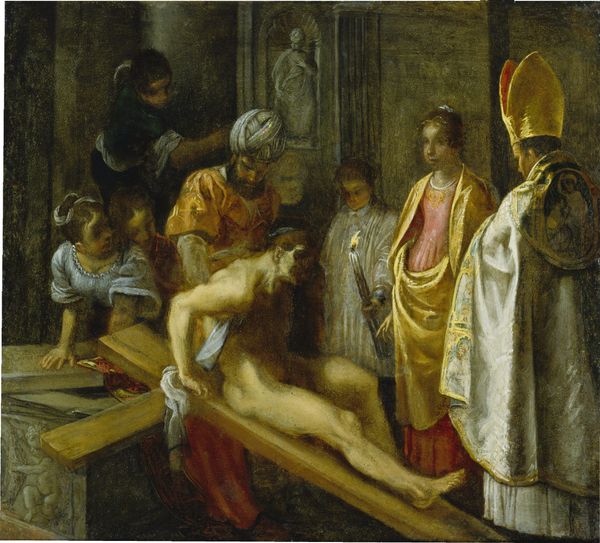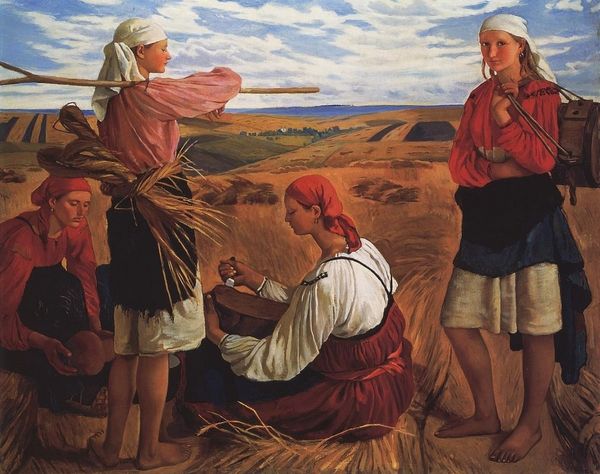
Christ in the House of His Parents 1849
0:00
0:00
sirjohneverettmillais
Private Collection, Tate Britain, London, UK
painting, oil-paint
#
portrait
#
narrative-art
#
painting
#
oil-paint
#
figuration
#
oil painting
#
jesus-christ
#
christianity
#
genre-painting
#
history-painting
#
pre-raphaelites
#
academic-art
#
portrait art
#
fine art portrait
#
realism
#
christ
Dimensions: 139.7 x 86.4 cm
Copyright: Public domain
Editor: So, this is “Christ in the House of His Parents” by Sir John Everett Millais, painted in 1849. The Pre-Raphaelite Brotherhood caused quite a stir with this one. Looking at it, I'm immediately struck by the intense realism, almost jarring in its portrayal of the Holy Family as working-class people. It's such a contrast to the idealized depictions you often see. What do you see in it? Curator: Oh, it's wonderfully subversive, isn't it? Millais pulls no punches showing the grit and reality of the carpenter's workshop. You see, what strikes me isn’t just the stark realism, but how Millais cleverly weaves symbolism throughout. That wound on young Christ’s hand? A premonition of the crucifixion. And look at the dove perched on the ladder – a representation of the Holy Spirit overseeing this very human, earthly scene. Do you notice any other symbols? Editor: Hmm, I didn’t catch the dove before! It’s almost hidden. And now that you mention it, that wooden frame Joseph is working on... does that foreshadow the cross as well? The arrangement of the figures has this triangular structure, and everything in the foreground. The people seem too old, compared to more modern interpretations. Curator: Precisely! Millais is setting the stage for the grand narrative, embedding hints of the future within the everyday. This, to me, is the heart of Pre-Raphaelite art - an honest, detail-oriented interpretation. Some called it ugly realism in Millais's time, while now the people find it deeply engaging, thought-provoking! I really dig those emotions from Millais! What is your final interpretation after reflecting with me on this art piece? Editor: That definitely gives me a fresh perspective. It’s not just a scene of humble domesticity, but a canvas loaded with symbolic weight. That realism almost makes the symbolism even more powerful because it's grounded in something so tangible. Curator: Exactly! And isn’t it fantastic how a painting, seemingly simple on the surface, can reveal layers of meaning the more we look? I'm delighted to delve into some great pieces together. Editor: Thanks so much! I will keep my eyes wide open.
Comments
No comments
Be the first to comment and join the conversation on the ultimate creative platform.
